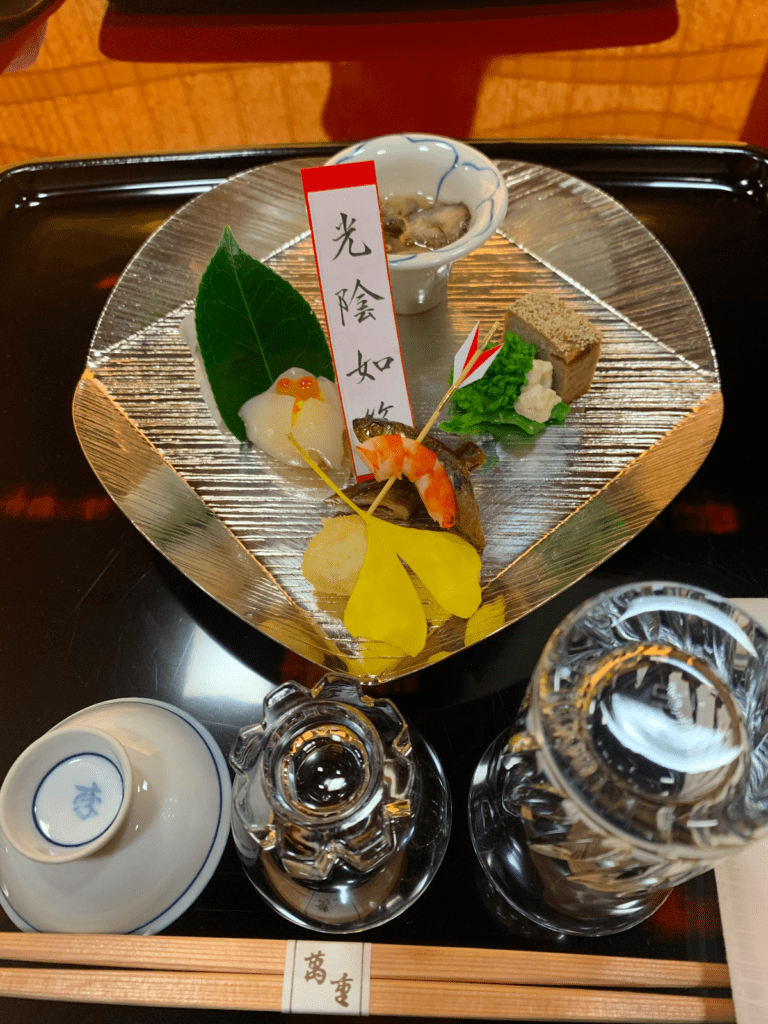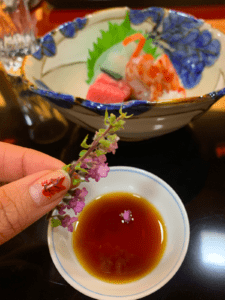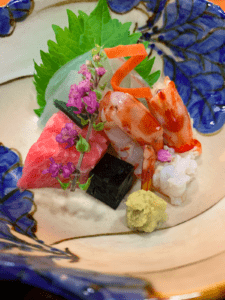Kaiseki Meal: Simple is Best
Anyone who knows me knows I’m chronically indecisive, particularly when it comes to food. I’m the terrible person who, in the middle of making their order at a restaurant, will change their mind and point to something else at the last second after the waitress has already scrawled down my original order. Or worse, I used to tell waiters, “Surprise me,” because I simply couldn’t make the decision myself. (I’ve been told that this is a terrible thing to say to a waiter, so I refrain from doing it anymore.) Because I am so terrible at making decisions, it sometimes results in me choosing every option. When I used to frequently go to Subway, I would always choose at least 5 condiments to put on my sandwich, to the horror of my sandwich maker. Chipotle was even worse. “Give me a little bit of everything,” I would say. I describe my tastes as varied, but others would say “disgusting.” Two things ring true: I enjoy excess, and I am terrible at making choices.
This especially becomes a problem in America, where there are what feels like thousands of items on a menu (Cheesecake Factory, I’m looking at you). Restaurants that only specialize in one thing (not just cuisine, but one singular dish) are increasingly rare in the U.S.
But this is so different in Kyoto, because so many of the restaurants here have an incredibly small menu, sometimes only serving one or two items. These specialty meals have been perfected, with peak ingredients always being used. There are often origin stories on the menus, talking about how the recipes have been handed down from generation to generation.
This perfection found in simplicity and minimalism makes sense. Japan has such a limited, seasonal assortment of produce to work with, so many generations of people have spent their time perfecting the resources they do have. This is demonstrated most perfectly in the Kaiseki meal.
A kaiseki meal is a multi-course, traditional Japanese meal. Originally served to only royalty, this dish holds an incredibly high price tag. The meal, according to TimeOut, is supposed to be “simple… seasonal, and meditive.”
Normally, I would never be able to enjoy a kaiseki meal on my meager student budget. But thanks to Kuroko-san, a professor Emeritus at Doshisha, I was able to experience it. And boy, what a wonderful experience it was.
The attention to detail is not only seen in the food, but in every element of the meal. A hot towel is given to you at the beginning and end of your meal to wipe your hands, and a server will be there to refill your drinks and serve your various dishes. A typical kaiseki meal consists of 7-10 small dishes, served in roughly 7-10 minute increments. Reservations must be made in advance, and there is no rush for you to finish your meal, as you have the entire room booked, with no one waiting for you to leave.

The starting dish consisted of sea cucumber, raw squid nigiri, and small fish caught from a local lake. Adorning the plate is a yellow ginko leaf, displaying the seasonality of the dish.

In this tiny bowl is a simple tofu dish, consisting of incredibly soft tofu, miso, pine nuts, and bits of cod. It came piping hot, and was several peoples’ favorite portion of the meal. It is exemplary in showing Japan’s mastery of simple ingredients.

You are meant to take the flowers and tear the petals into the sauce, once again displaying the meal’s seasonality and full use of every part of organic material.
I didn’t expect to be full, thinking that 7-10 small dishes would never be enough, but the meal was able to leave me satisfied, without feeling stuffed.
Once again, I’ve always been one for excess. If there is the option for more, I will always choose more. But food in Kyoto has helped me realize there is beauty in simplicity. I used to always choose the most complex thing on any menu, but with that option taken away, I now am fond of ingredients in their rawest form.
In a lot of ways, Amherst’s Valentine Dining Hall does a very similar thing. Val might not be the hot bed of haute cuisine, but it does have a focus on seasonality and sustainability. I always appreciated that about Val, and honestly, I’m excited for the limitless supply of free fruit (one thing that Japan cannot provide me).
Deliciousness can be found in simplicity.
I’ve been able to enjoy Japan’s mastery of simplicities, and now I’m excited to rediscover the simplicities of home.


